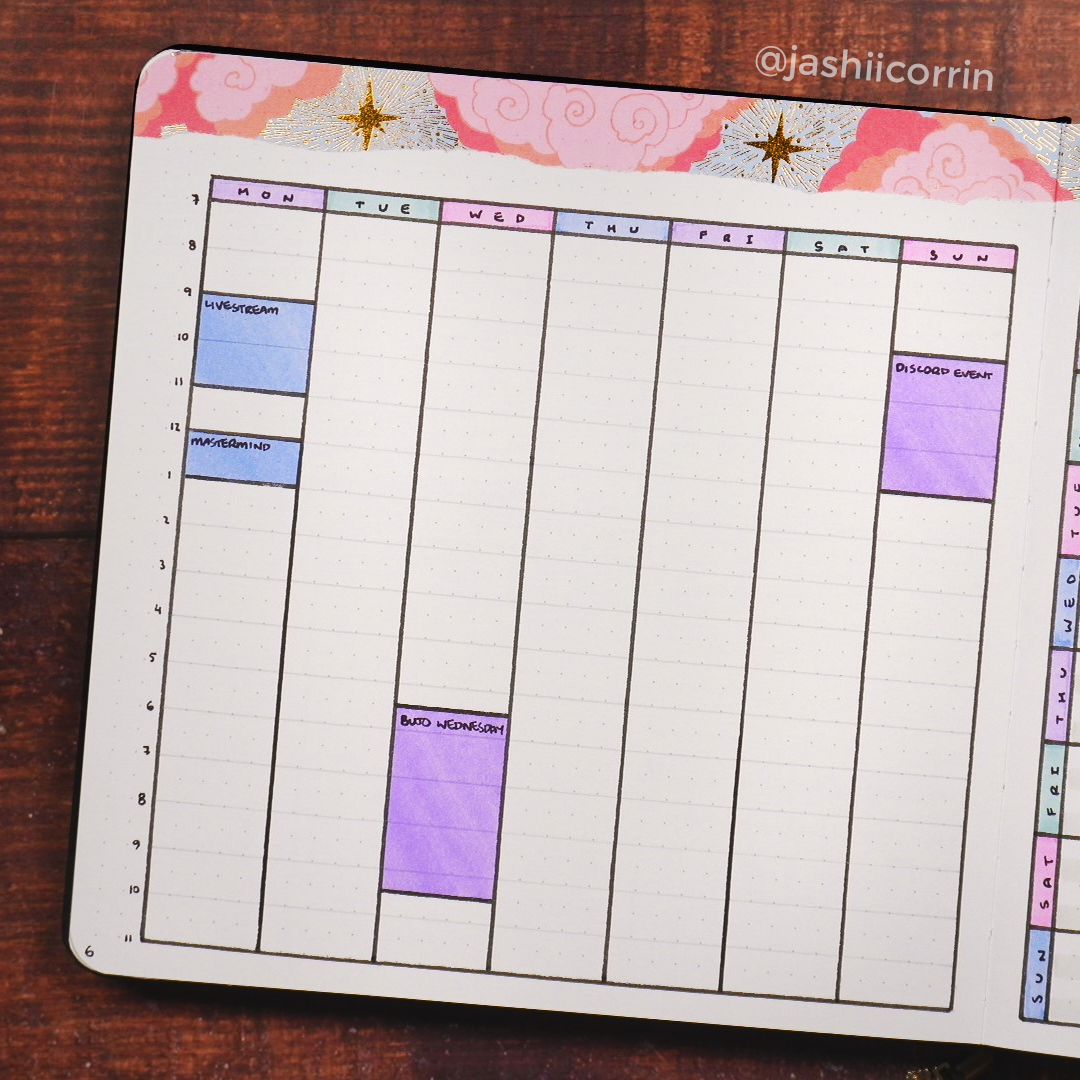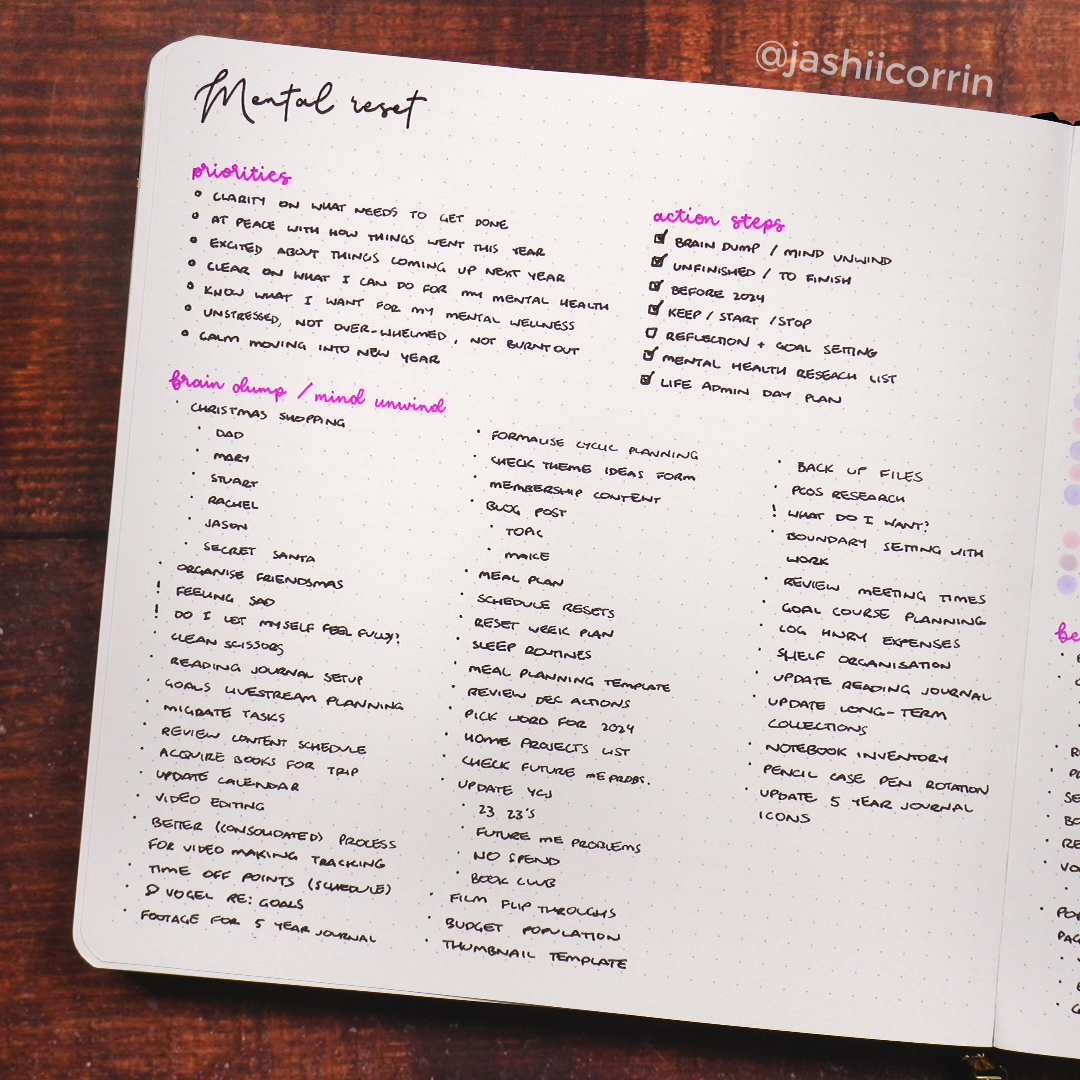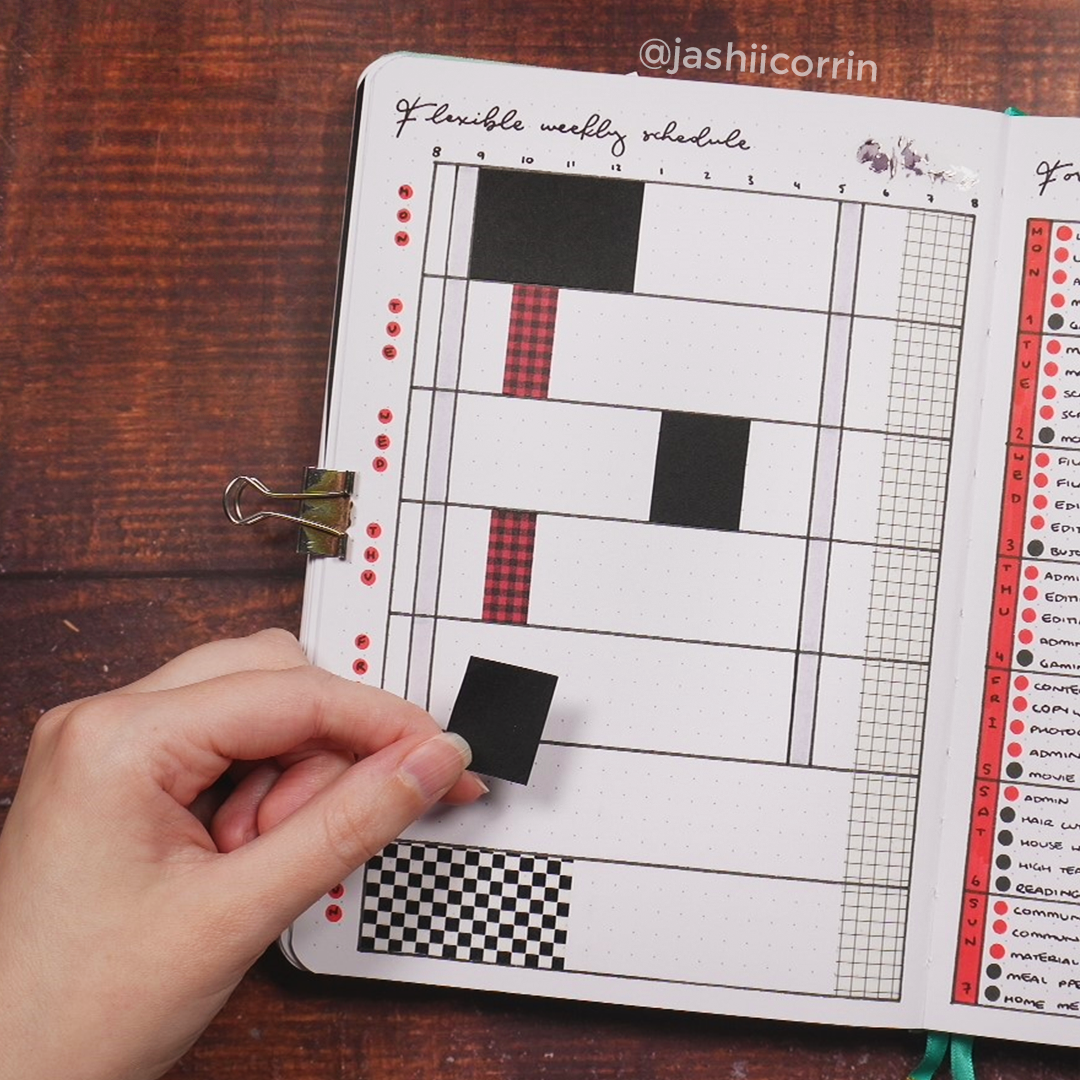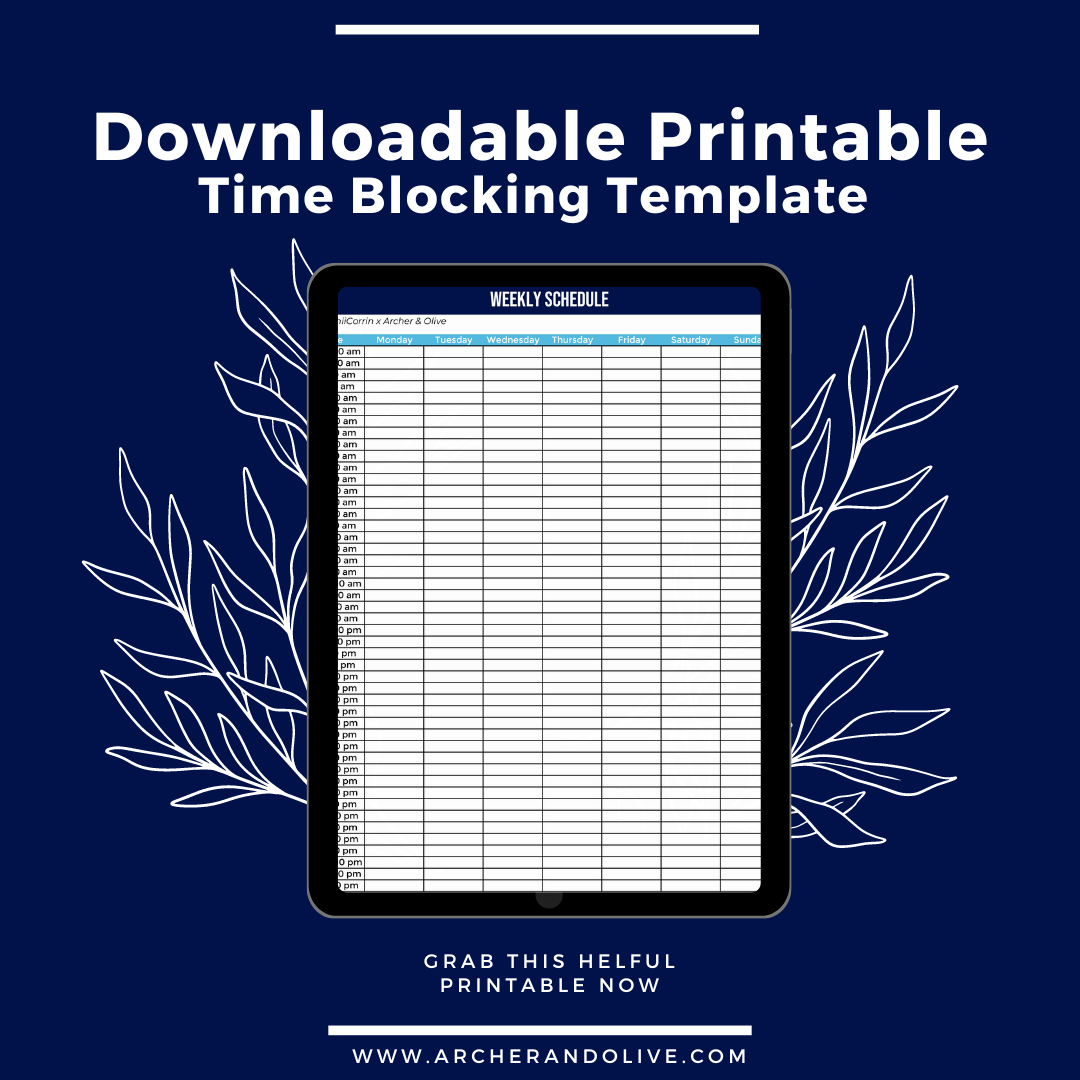Life is busy. Work commitments, personal tasks, household maintenance, friends, family, tackling our goals AND taking time for self-care? Not to mention everything else! It’d leave anyone feeling overwhelmed. Making time to do it all can be a challenge, and while there are plenty of strategies to help us with time management, let’s look at one of the classics.

Turning busy into productive
Hi team! Jess or JashiiCorrin from YouTube / Instagram here talking about time blocking. More specifically, a way to tackle time blocking if you have a “rebel brain” like me. Time blocking is a great tool for those of us who have a wide range of tasks and projects that we need to take care of. Knowing when we’re working on what can have great benefits for not only making the most of our time, but also helps combat procrastination and feelings of overwhelm.
While time blocking can be a powerful tool, it doesn’t come without its challenges. Traditional time blocking is quite rigid in a “this happens now, that happens then” way, but if you’re anything like me, we don’t like being told what to do! If your brain likes to rebel against any form of perceived restriction, the idea of getting specific on assigning tasks to particular times can have us putting time blocking in the “too hard basket”.
But fear not! In this blog post we’re looking at what time blocking is, how it can help, and most importantly, how can those of us with rebel brains actually do it.

Supplies
It pays to be prepared, so it’s time to grab some supplies! I used the equipment below which you may also find helpful. Remember you can use my code JASHIICORRIN10 for 10% your orders at Archer and Olive; we love savings!
- Archer and Olive notebook
- Pens or pencils of choice
- Ruler
But…what IS time blocking?
Time blocking is a useful technique for managing our time effectively. Similar to what it sounds like, time blocking is all about having dedicated blocks of time for tasks rather than small stolen moments all over our schedule.
It involves splitting your day into specific blocks of time, with each block being dedicated to a particular task or a group of related tasks. Instead of jumping between various activities, time blocking encourages us to concentrate on one task or a set of similar tasks during each designated block. This gives us a more structured framework for organising and tackling each day.

Time blocking is often paired with its close friend, task batching. While time blocking assigns specific time slots for different activities, task batching involves grouping similar tasks together. Instead of allocating specific times to individual activities, you focus on similar tasks during dedicated blocks of time.
A good example of this is emails. Rather than checking and responding to emails every time a new one pops up in your inbox, we can set aside a period of time to work on emails (time blocking) and then deal with or respond to as many emails as possible in that period (task batching). Combining the two techniques can have great benefits for our time management.
How time blocking helps
With all the tasks we have to do in any given day, a myriad of things can get in our way. Not only is it bad enough that we already have too much to do, but villains like procrastination, overwhelm, and struggling to focus can really eat away at the time we have available. Time blocking is a great way to address these though, along with some other time management enemies!
Procrastination
While diamonds are made under pressure, putting off our work until the point of a time-crunch doesn’t have as great results. This often leaves us feeling stressed and in a “why am I like this?” mindset. But what if we rely on that time pressure to get us started?
Time blocking can help by creating a sense of urgency, making it less likely for us to procrastinate. By breaking down the day into dedicated blocks and assigning tasks to them, we create artificial deadlines on when things need to be done.

Overwhelm
Overwhelm is often caused by feeling like we don’t have control. When we have too much on our plate already, and feel like things are constantly being piled on, it’s no wonder that our task lists can leave us feeling all over the place. The easy solution is to burn the list and run away, but that’s not necessarily the best course of action.
While time blocking can’t necessarily give you control over what tasks you need to work on, it does help you control when you work on them. By assigning groups of tasks to specific times, we have more autonomy in how we tackle our work, thus combatting one element of overwhelm. When we know specifically what we need to work on and when, we stress less.
Lack of focus
When you’re inundated with tasks, it can be hard to know what to work on first. This is only made more difficult when everything seems important and urgent. One strategy here would be to multitask, but truly being able to multitask is a rare ability; most of us are just switching between many things rapidly, which has its own problems! This, paired with the ever present distractions that life has to offer, can be a recipe for a lot of wasted time.
Our best time management buddy can help here too. By assigning one task, or a very related group of tasks to a set period of time, this allows us to do single-tasking. We can think of this as the much more effective cousin of multitasking. Rather than constantly switching our focus between multiple commitments, we’ve assigned each one a set time to be worked on. This helps us to be more focused on the task at hand, knowing that the rest of our work has its own time later.
Work-life balance
All of the challenges we’ve already talked about are made worse when our balance is off. While “true” work-life balance might be a pipe dream, we can still use time blocking to strive for it. Not only can we time block our work tasks, but it’s also possible (and recommended) to allocate time for other activities too. Anything is more likely to happen if we set aside the time for it, so make sure to add dedicated blocks for personal activities, social and family time, and self-care. By consciously setting aside time for work AND play, this helps us make sure our work responsibilities don’t encroach on our personal time. In turn, this helps us promote a healthier balance in our lives and build greater life satisfaction.
Time blocking basics
Okay Jess, I know time blocking can be beneficial, but how do I actually DO it? We’re going to take this in a step-by-step manner but if you’d rather watch, then read, check out the video below!
1 - Pick your time blocking timeframe
Do you want to do your time blocking on a daily overview or a weekly overview? Going with a timeframe much larger than that can often present problems related to predicting what’s actually on your plate at the time, so keeping it closer to the here and now is often better.
2 - Draw up your schedule
The actual structure of this is going to depend on your timeframe and personal references, but typically this is set up as a table with the times for each day running down one side, and the days of the timeframe running along another. For the purposes of this example, I’m using a weekly structure with a full 24 hours. If you want to use the same, click the image below to nab the free printable I’m using!
3 - Put in your fixed appointments
Some things in your schedule have set times they are going to or need to happen. Accounting for these before we fill up our calendar with other time blocks is key! Note down when in the timeframe you aren’t available to work on your other commitments due to other time-specific happenings. These could be meetings, regular commitments, or essentially any event or happening that has a specific time.
4 - Brain dump your task list
By getting all our tasks out onto paper before you start, not only does this give us a good idea of what we need to get done, but we can also start to sift through them and see which ones most need our attention and which might be best suited to particular times of the week.

5 - Batch like-tasks
This is an optional step, but group like-tasks together can be a great way to make the most of our time. Grouped tasks can be assigned to the same time block. Try to be mindful that you don’t want too many tasks in one time block otherwise it will likely be overwhelming; this will depend on the size of the tasks and the number of them.
6 - Set your priorities
From your list, pick out the most important tasks or those with the most pressing deadline. You can use something like the prioritisation matrix to help with this, but your priorities should get first dibs on your schedule. Make your best estimate of how long they will take to do, and fit them in during the times they are most suitable (e.g. before deadlines and during the parts of the day where you’ll be able to give them the best of your attention).
7 - Assign your work
Whatever time is left over is where you want to assign the rest of your work. As you do this practice more, you’ll get a better idea of how long things take you and how long you can sustain your focus on one type of work, but as a starting point it’s better to have extended periods working on similar things. This helps to not to break up your focus too much across each day.
8 - Work your plan
Once your schedule is set up, it’s time to get to work! As you work through your time blocks, pay attention to what tasks took as long as you expected versus which took longer or shorter. You can use that information to help inform your future time blocking endeavours.

Time blocking isn’t a one-and-done strategy. You’ll likely want to do this process regularly as your list of things to do changes over time. That could be done on a daily or weekly basis, or possibly only when you’re starting to feel particularly overwhelmed by your commitments.
Where it falls down
While time blocking has its benefits, it can also feel restrictive. I don’t know about you, but I don’t like being told what to do, even if it’s me who is doing the telling! Another issue is that sometimes we don’t necessarily know how long a task is ACTUALLY going to take; what if the time block we set aside isn’t long enough? Thankfully, there are a few ways we can make time blocking more flexible to help rebel brains like ours make the most of this useful strategy!

Tips for rebel brains
Make your time blocks more vague
Think of your time blocks as being fuzzy; the don’t have a super strict start and end time, but more just vague time spans. This could be like considering having two blocks of time between breakfast and lunch, then another two between lunch and dinner. This is helpful if you don’t necessarily have your meals at set times of the day, but do tend to have roughly the same amount of time between them.
Don’t time block too far in advance
While a fully assigned weekly schedule can be comforting for some, for others it feels restrictive. Play around with shorter time blocking timeframes as you get used to the system. Time blocking too far in advance can also be tricky when it comes to accurate commitment prediction; the further out we get from the present, the less accurately we’re able to predict what’s going on for us. Everyone is different, so play around with what time blocking timeframe works best for you. I’ve found my time blocking can be done with decent accuracy for up to 3 days ahead of time, but beyond that, expectations versus reality don’t really align.
Build as you go
It’s nice to feel like we have control over our actions in the moment, so a “build as you go” approach to time blocking might be for you. This is where, when we finish one time block, only then do we decide what to do with the next one. For this I would set time blocks that are all the same length of time. Once you’ve used one block, you can then decide whether you move onto working on something else, or continue with the work you’re already doing if it isn’t finished. This typically works better if you’re setting yourself shorter time blocks like 30 minute intervals.
Practice
Boooo, the forbidden word! But really, like with essentially any new skill, it can take time to get the hang of it. The more you use time blocking as part of your regular time management system, the better you’ll get at accurately predicting how much time things actually take you. You’ll develop a better appreciation of how far in advance you can block your time, and better stick to the blocks you set for yourself. You’ll find the right way to balance scheduling and flexibility for how your brain handles it, and in turn make better use of the time you have.

Block party
While time blocking can help with the when to do things, if can still be tricky to decide what needs you attention first. In our previous blog on the prioritization matrix we talk about how you can use that to sequence your task list, so the most important tasks are tackled first.
I’d love to see your time blocked layouts though, so be sure to tag me over on Instagram with @jashiicorrin. Looking forward to seeing your creations!












0 comments